(Italy 2007)
Driving across the countryside is not an efficient use of time while traveling, but it certainly is a beautiful way to travel. And where we’re going–the backroads work just fine. We’re on our way to other hilltowns, before our final destination tonight of Pienza. Above is Orvieto, from afar (through a haze, but it is apparent how “on a hill” it is).
We both decided we could live in that house on the hill if we had sacks of money. But, oh, what a beautiful location.
After traveling for a length of time, we arrive at the bottom of the hill of the town of Todi, in Umbria. This little church is the Santa Maria della Consolazione, built between 1508-1607. Yes, that’s 100 years.
It’s one of those brilliant little Renaissance churches based on a Greek cross. There’s some thinking that it was built to a plan by Bramante. I’m always impressed with the architecture of that time, as it seems there’s not a hair out of place on these churches, and they are so symmetrial and ordered. If ever your life was crazy-time, you’d want to come and pray in a church like this.
Interior Ceiling
Here’s a map of Todi for orientation. Many hilltowns have a long street down the middle, with everything branching off it. This long street often leads to the main plaza and a church.
We drive up a little further, park below this church, the San Fortunato (built 1292-1462, according to our guidebook), obviously missing the upper part of its facade. I liked the criss-crossing steps on the hill, visible on the map above, to the left of the main part of the town.
Todi has a lot of curving streets bordered by buildings. The shadows leading to the light are a typical scene, with flowers in the window box.
Or hanging laundry. Don’t you wonder who lives in that tiny one-window room just below the tablecloths? Or what it looks like from the inside? (Maybe a late addition of a bathroom?)
View from through the Duomo’s front doors.
View from the Duomo doorway into the Piazza del Popolo, which was built in the 13th century on the site of a Roman temple to Apollos. I liked its spare feeling–not a lot of ornamentation.
If I lived here, I could eat every night on that little balcony. There’s a lot times when traveling here that we would see a picturesque place like this, and wish for a few minutes that we could enjoy their style of living. But how often would the children and grandchildren be able to see us if we lived across the ocean? Our family has a pull that no beautiful house can match.
Giribaldi Plaza. This man was a folk hero, soldier, member of Itay’s parliament and apparently responsible (or contributed heavily) to the unification of Italy. Didn’t know any of this when I saw the statue–just liked his outfit and his hat, and the fact that the parked cars were an interesting juxtiposition against his rakish stance. He traveled all over the world, married a Brazilian woman, and even came to the States to try and raise money for a ship.
Lovely square tower, so typical of these towns. I assume all the dots next to the windows once held shutters.
This was on one side of Giribaldi Plaza. We were thinking about our next meal (lunch) and moving on to try and find a cousin to our Derutan plates hanging on the walls back in our kitchen, so we buy some prosciutto to go with the rolls we had from Orvieto, along with one tomato and two yellow plums. We stop in Deruta and eat our lunch in the car, then try to find the pottery. First stop–not the style, but beautiful. The town appears to be closed for the lunch hour–it’s all deserted. I’m about to give up home, but Dave spots an open door.
We go in. This is when I know Dave has ultimate tourist karma, because it’s the shop!
I’d taken pictures of our plates before leaving home and the owner identifies them as his. He confirms that he sells to a place in Laguna Beach, so we know it’s the right place. We take a long time, but finally choose salad-sized plates to take home. Here he is putting the wire on the back for hanging. He then invites us in to see the artists at work in the workshop.
Were you expecting Gepetto? It’s lunchtime he says (he speaks English), so a lot of them are at home.
It was interesting to me how they used one hand to support the other as they painted.
While we’re there, another tour guide with only three women comes into the shop, and I overhear her say this is the place to come for high quality pottery from Deruta. After paying for our plates, we find a gelato shop at the end of town and celebrate by sharing. We head on the highway toward Perugia, then veer off to Assisi.
We can see it from the motorway, high up on a hill, and we begin the climb up to the top (in our car). Just to the left of that green patch on right (on the map above) is a car park–a garage with LOTS of parking. This is at the top of the hill, so we begin to wend our way down to the Basilica.
This plaza is the first one we enter at the top of the hill, with its traditional square tower.
The main drag.
A friar on his way past the gelateria.
Flower-filled courtyard.
A favorite shot when I can get it: through an archway into the valley below.
Old frescoes (above and below) above interesting doorways.
A combo drive/walk street. Or else the paved sidewalks are for shopping carts and baby buggies.
Aqueduct of Assisi: water supply.
Dave in front of a building that looks held together with rods and end posts, but it has a variety of windows, probably from different eras, er–centuries. Just around the bend from this is the Basilica. This was the one that was so heavily damaged in the earthquakes in 1997. I remember seeing all the rubble of the collapsed tower, but we came so I could see the frescoes by Giotto, which are along the walls of the main church.
It was the campanille to the left that was so heavily damaged (I think). PAX on the lawn in front of the basilica. We took the tour–Reliquary, Tom, Lower Nave, Upper Nave–but no photos allowed, ending up in the gift shop, where there were no decent books on Giotto’s frescoes.
Okay to take photos of the courtyard, though, just outside the gift shop. We head back inside the church to admire the art. Here’s some sampling from the web.
The main part of the church.
Given that I’ll probably never get into Scrovegni Chapel, these were next best thing. We linger a long time, enjoying all the artwork, walking up and down, but mostly sitting, amazed at these frescoes, still intact from the 13th century. They portray the life cycle of St. Francis. Above, he eschews rich clothing and his titles so help the poor and needy. Below “Do not touch me,” as he greets Christ.
Head to this website to see more.
Back outside, we take more photos.
The friary? I like the brickwork.
Lower level, I guess where the tour busses arrive and drop off the tourists.
We head back up the street, spotting a nun. Silly to take photos, I suppose, but it’s not something I’ll see often in my hometown. Yet, it’s evident it is part of life here in Assisi.
This reminds me of a balcony where a Juliet might talk to her Romeo. On that day in Assisi, rain drops were falling–spitting, actually–but no rain.
Thirsty, we buy a 2-euro bottle of water and drain it. That’s one of the things about traveling, you learn not to take easy access to a drink for granted. I assume these are coats of arms affixed to the wall.
Another balcony on another square tower. We’re off to Pienza to our hotel.
We found this Hotel–Piccolo Hotel La Valle–on the web, where it was part of a traveler’s diary, then confirmed it was a good hotel on Venere.com, a cousin to our domestic Trip Advisor. It was at the edge of the town, and when we opened our windows we saw the countryside below.
Requisite photo of bathroom. Love the checkboard tiles.
We went to dinner at a restaurant recommended by the hotel desk: Da Fiorella. It is a very small place, with an upstairs loft-like area overlooking the main floor.
In the front is a fennel, pepper, carrot and raddichio salad. Dave had grilled eggplant with cheese. And in the center–heaven–in the form of lightly dressed white beans with onions.
Dessert: panna cotta with berry sauce and berries. We shared it–delish!
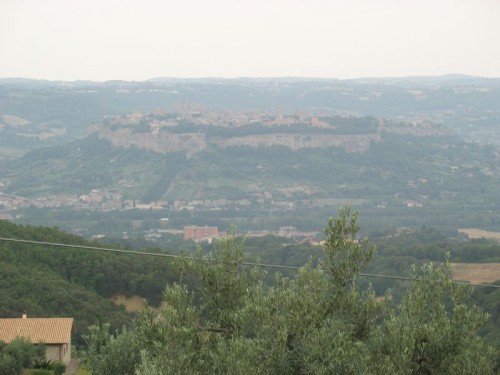
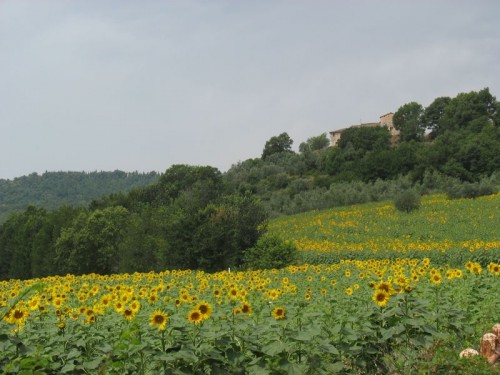
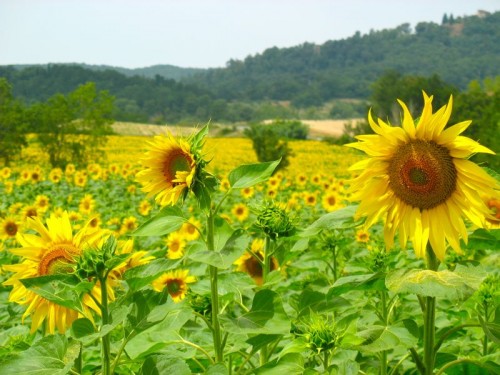
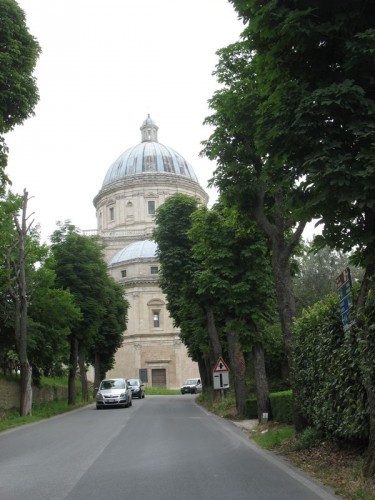
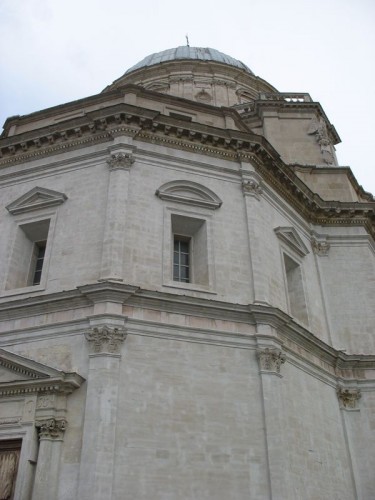
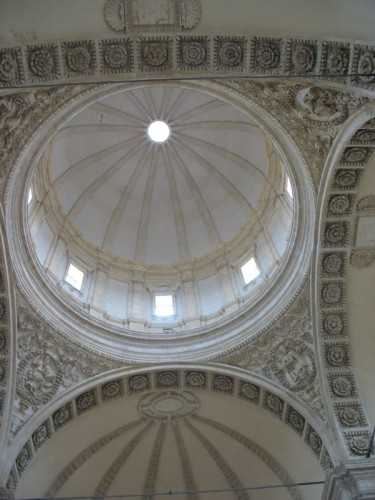
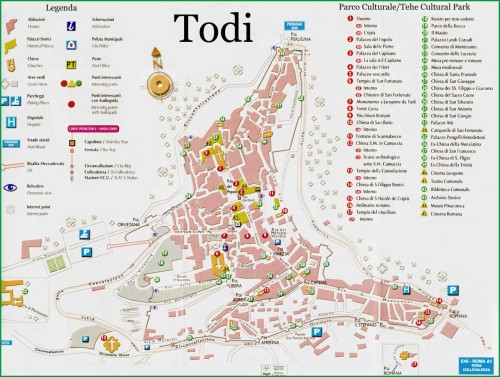
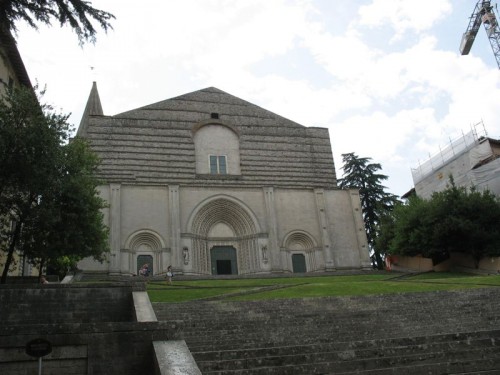
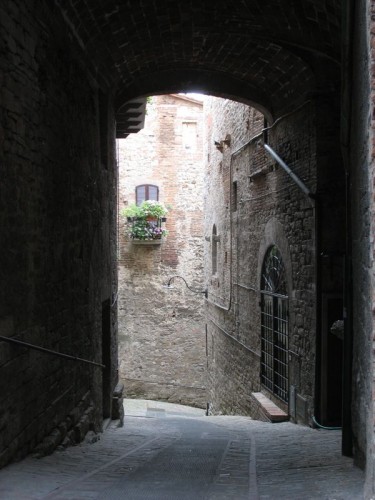
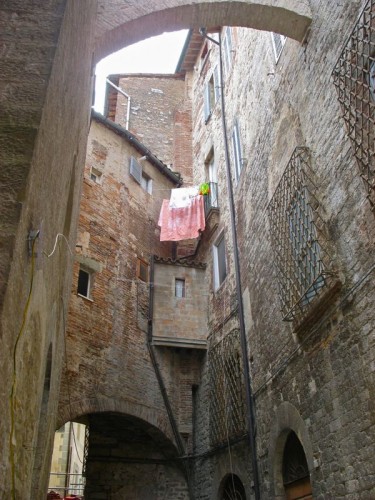
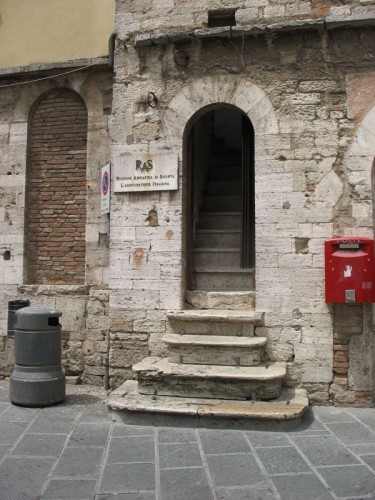
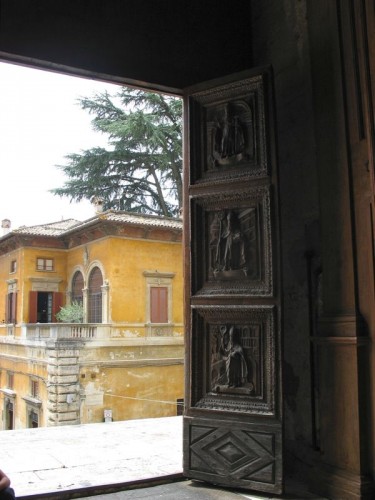
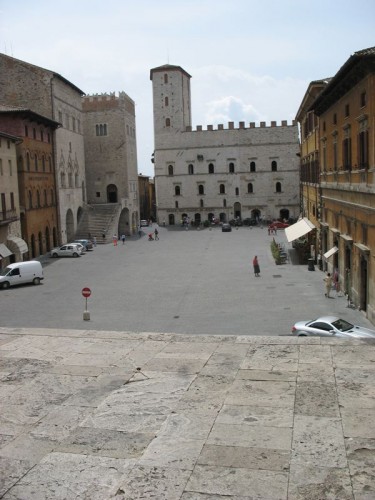
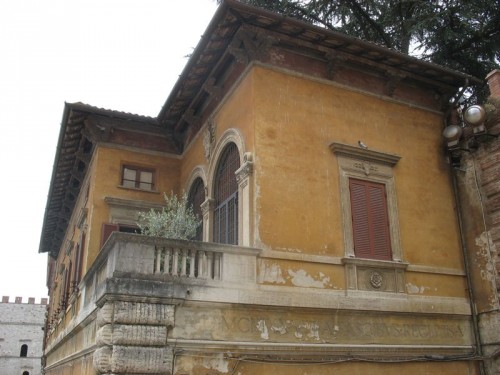
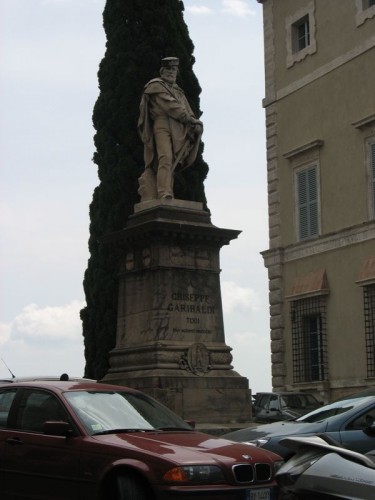
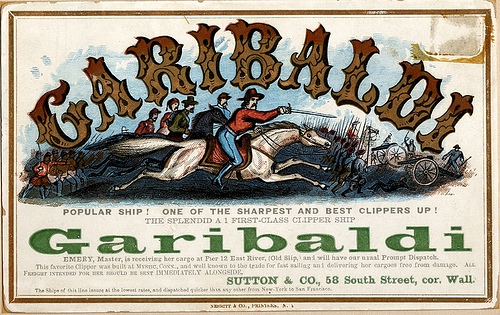
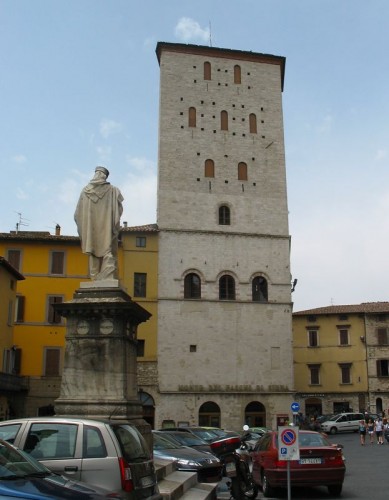
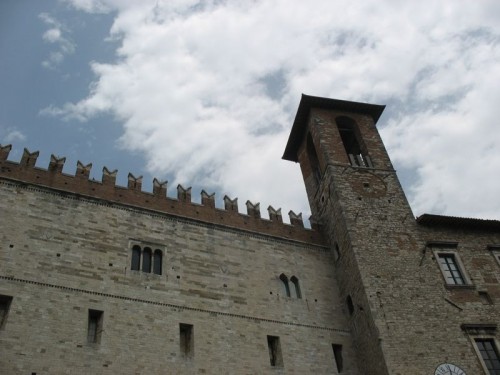
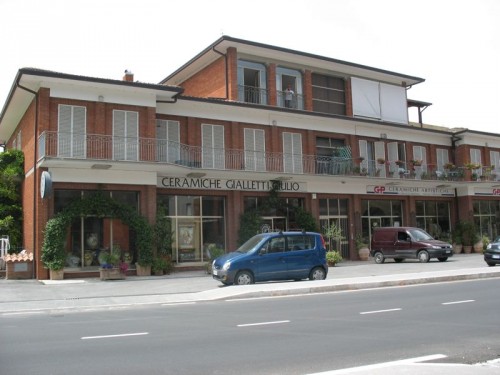
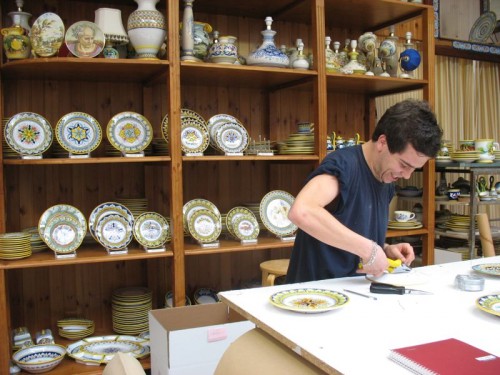
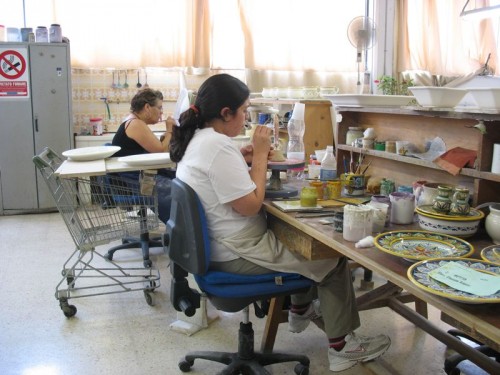
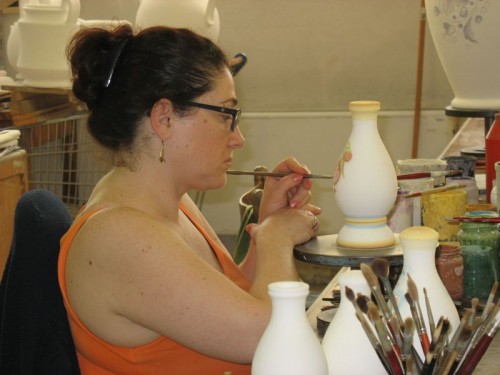
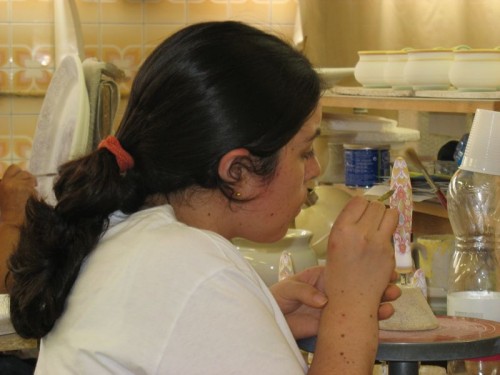
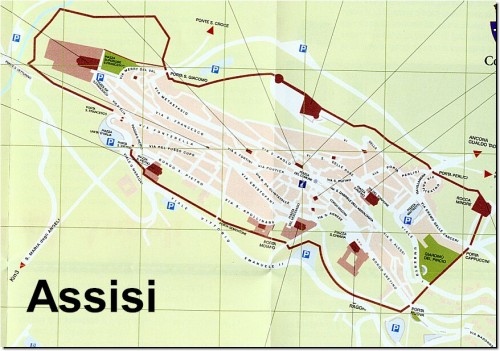
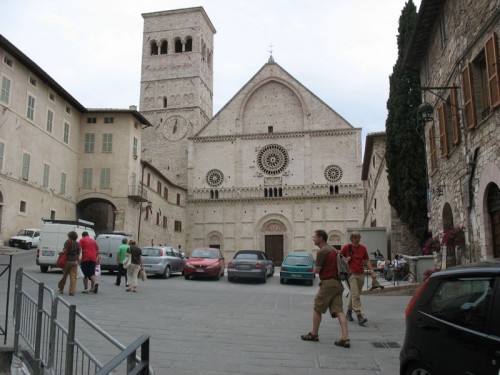
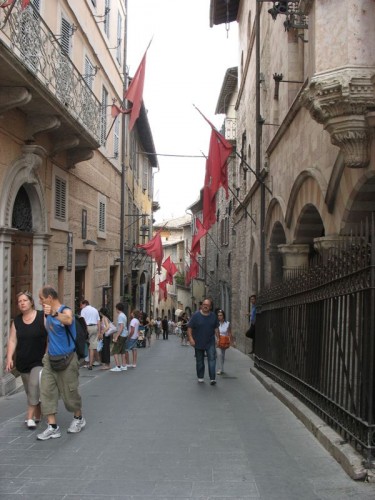
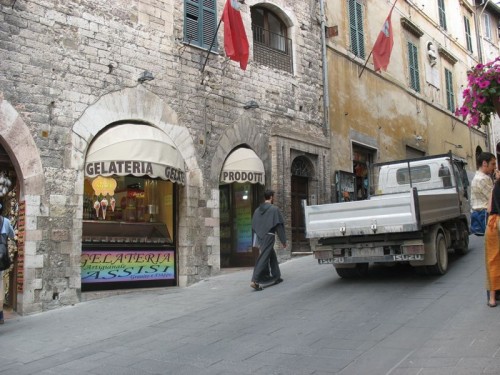
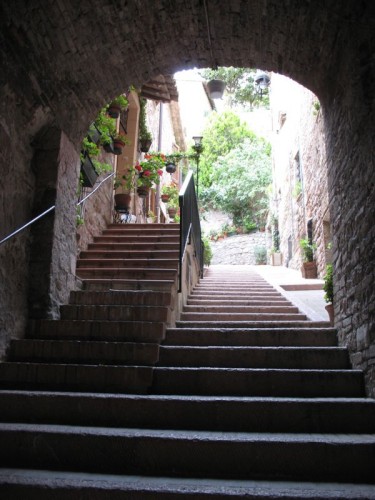
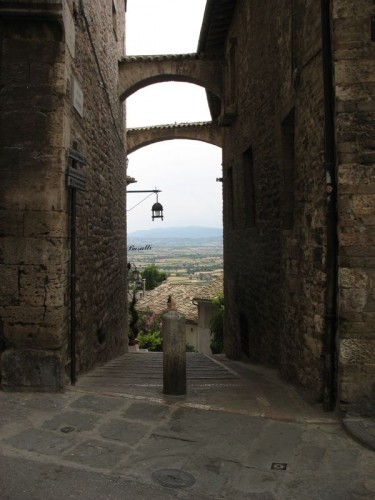
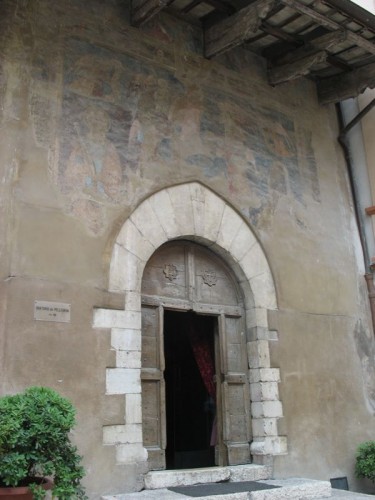
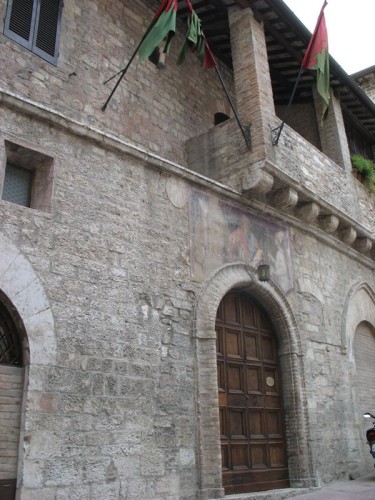
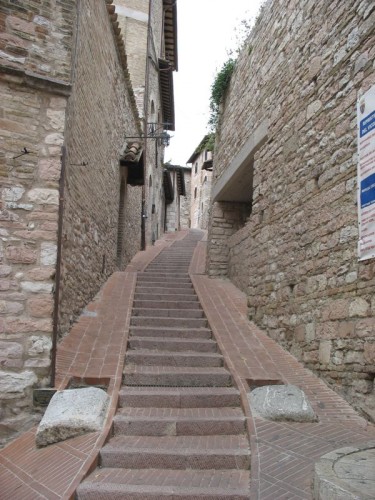
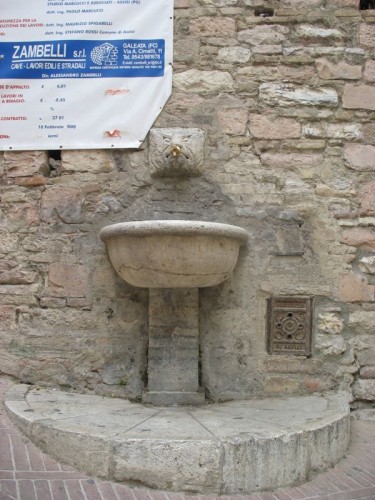
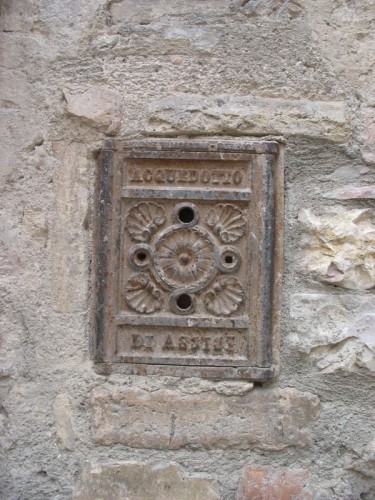
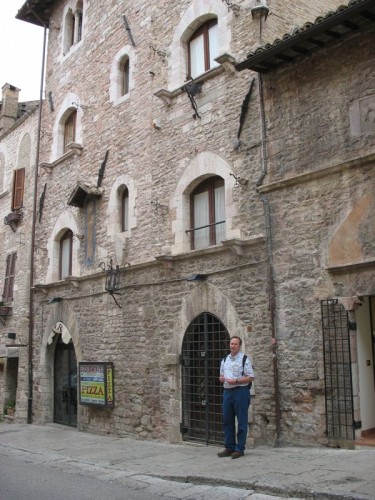

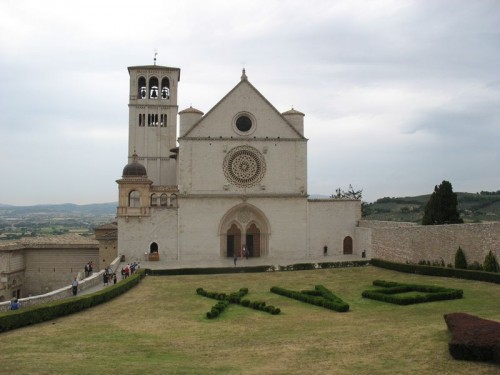
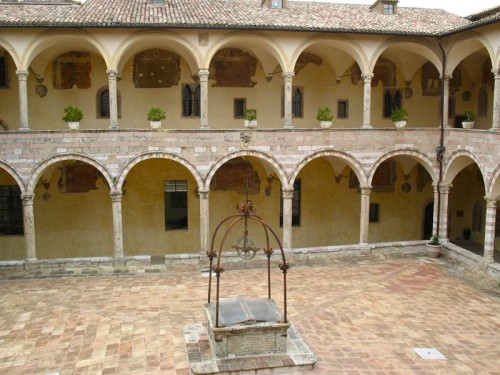
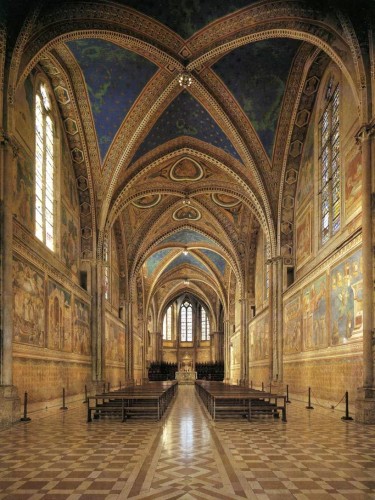
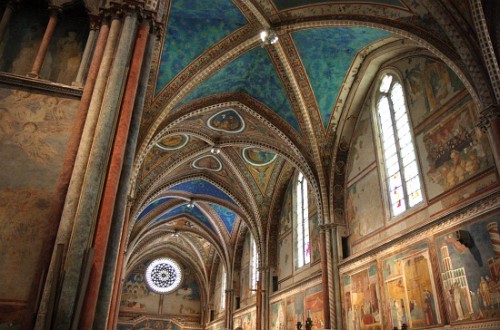
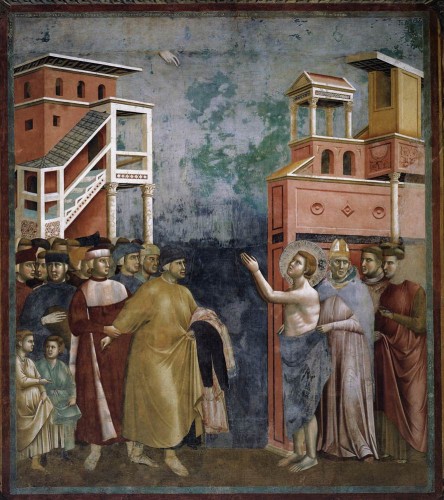
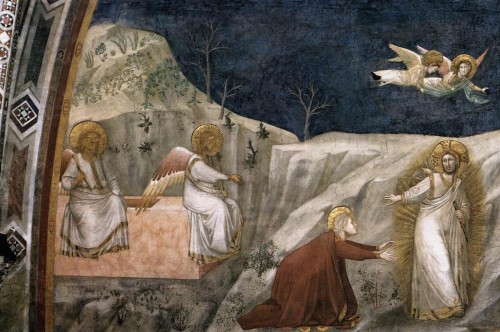
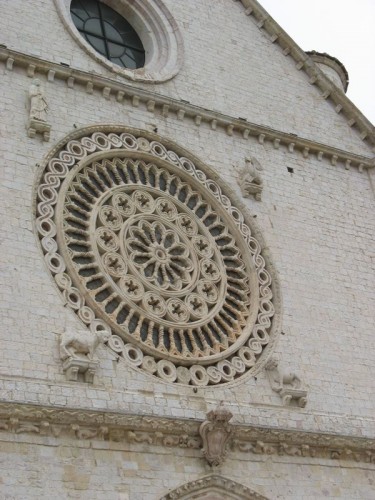
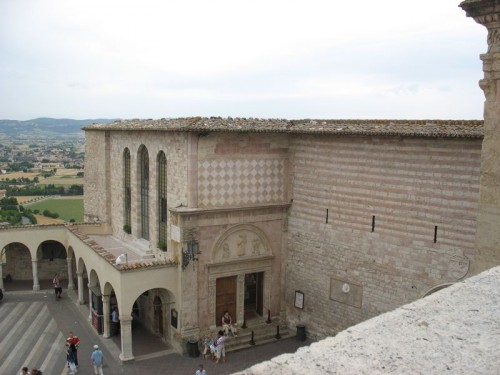
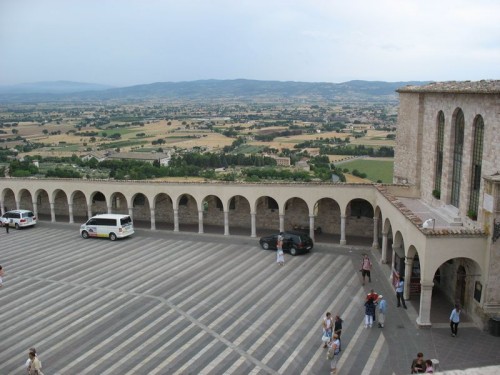
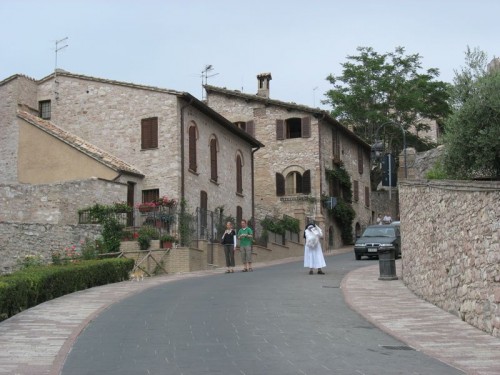
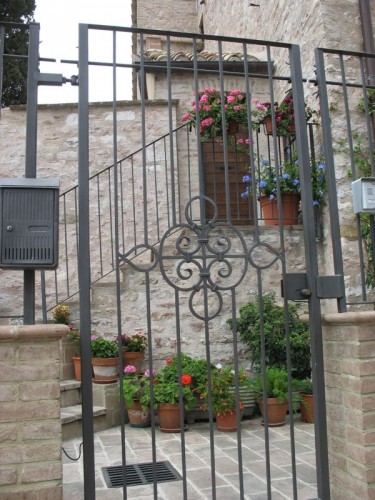
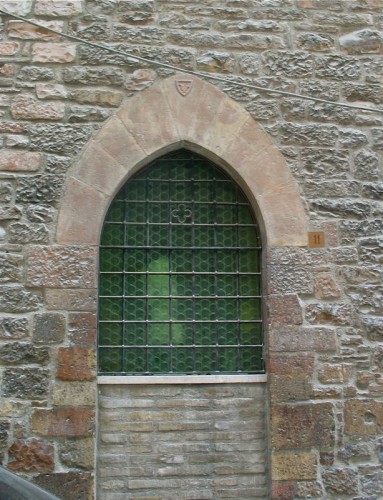
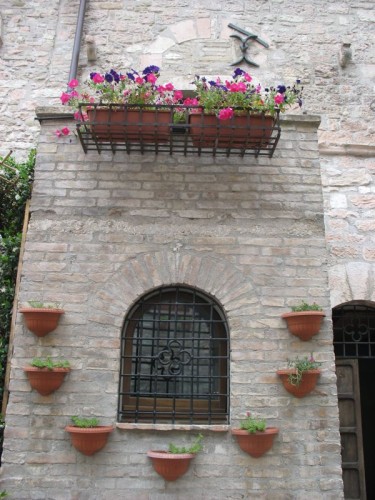
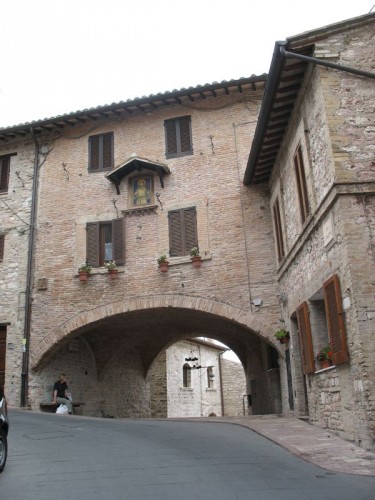
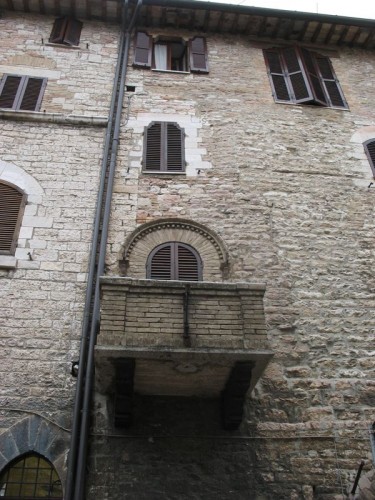
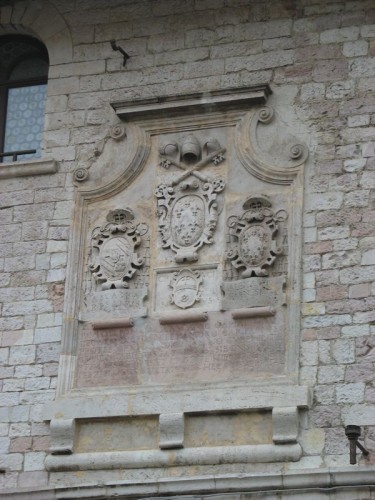
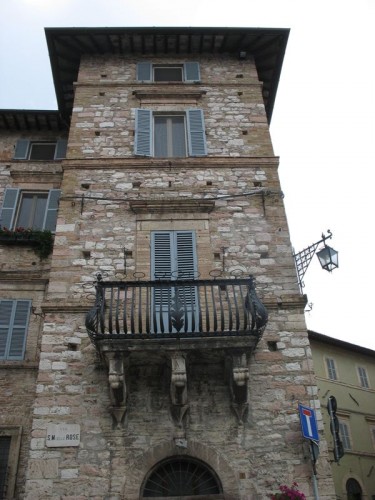
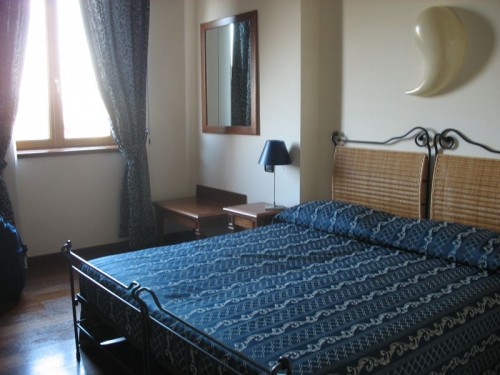
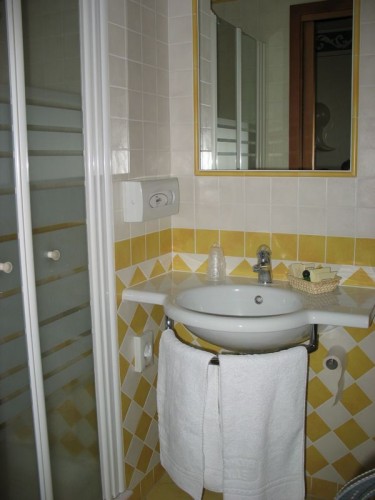
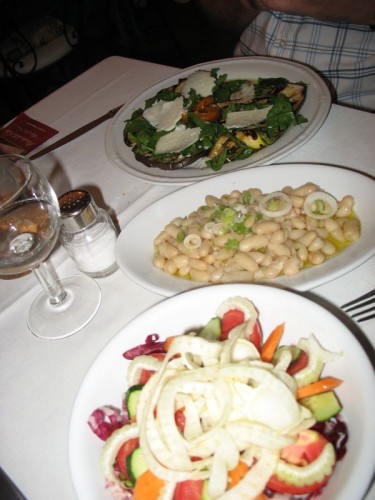
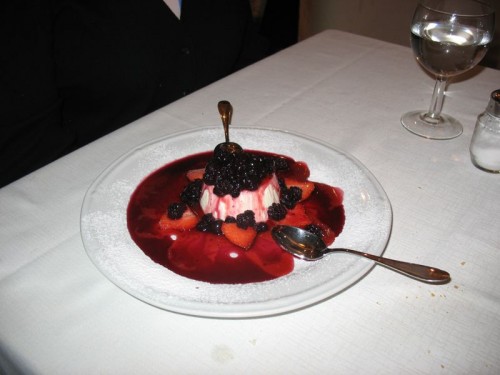
Wow, not sure what my favorite picture is, but it is hard to beat those sunflowers at the very beginning or that panna cotta at the end. Wonderful bookends to some great travel-blogging! (P.S. How can ANYONE walk so nonchalantly past a gelatto shop?)